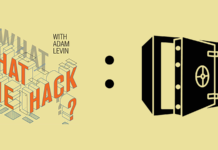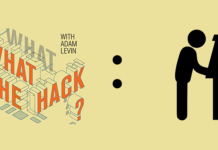

While a whole lot of folks are obsessed with what to do about, or to, the 1%, I would like focus on an issue involving the 90%. This isn’t about the wealth or income gap. It’s about the credit gap. It’s driving the Fed crazy and stifling the economy.
Here’s the problem. Right now, banks are lending the bulk of mortgage money to people who have great credit, but are less likely to spend the money they save. As the Wall Street Journal reported this week, the people who need credit the most — middle-class families who are the drivers of the American economy — get denied because banks consider them too risky.
“Last year, nearly 90% of all new mortgages originated went to households with high credit scores; before the financial crisis, it was about half,” the Journal reported.
The Journal also noted that the trend was ameliorating somewhat with respect to certain kinds of consumer debt, such as car loans and credit cards. Of course, that is precisely what you would expect given the fact that a lender’s return on car loans is much more attractive than the equivalent return on mortgages, and neither compare to the sky-high rates earned by credit card issuers. Furthermore, credit card limits are much lower and can be closed with little notice while car loans are pleasantly short-term, compared to the long-term and large-sized risk of a mortgage.
For generations of middle-class Americans, the 30-year fixed-rate mortgage has been the primary building block of wealth and economic stability. Unfortunately for millions, that superhighway to the Promised Land has now become a parking lot. The job loss, missed payments, foreclosed homes and trashed credit scores caused by the financial crisis have created a permanent, disenfranchised class. A significant swath of the American public is, in effect, separated from the benefits of a modern financial system — unemployed, little or no access to credit, home ownership threatened.
Even as this problem deepens, the government’s traditional method of increasing credit availability is already tapped out. The Federal Reserve is practically giving away money to institutions, keeping interest rates close to zero. The Fed has again confirmed that rates will stay that way through at least 2014. While I believe that policy is important to maintain, I don’t believe that it can or will have any impact on the credit gap as things stand now.
We need a meaningful private sector solution. Now I’m not advocating that banks lower their lending standards, which they did during the housing bubble to create fake demand and keep the spigots of mortgage fee revenue flowing. Rather, banks need to adopt new ways to recognize who is credit-worthy and who is not. That’s because current credit scoring models, based upon traditional credit report data sets, can’t help banks identify millions of potential customers who are perfectly trustworthy and deserving of credit.
Let’s face it, the Great Recession didn’t just hurt scammers who took out half-million-dollar loans for McMansions using no-document “liar” loans. Millions of innocent people were crushed and millions more are denied access to credit due to insufficient information and tighter restrictions.
If we are to get this nation moving again, we need to responsibly spread credit to borrowers with “thin” or Great-Recession-induced decimated files.
“Thin file” consumers simply don’t have sufficient payment history established in their credit files to get a credit score high enough to qualify for mortgages. This is a problem that credit bureaus are beginning to acknowledge. In the past few days, for example, the biggest credit bureau, Experian, unveiled a new credit score called the Extended View Score, which, as Credit.com reported earlier this week, “pairs data from rental agreements and public records with core credit information to generate a report for consumers with thin-to-no credit files.”
To mine these potential customers, banks need to speed up the process of integrating “alternate credit data” into their decision-making process. These models take into account information which demonstrates reliability, but isn’t included in traditional credit reports like consistent payment of rent, utilities and other recurring bills.
On July 20, in a Capitol Hill briefing, the President and CEO of the Policy and Research Council (PERC) announced the results of a study supporting the proposition that alternative data represents a meaningful tool for lenders when assessing credit risk.
“Despite the Great Recession, the preponderance of evidence establishing the value proposition of alternative data is overwhelming and in-controvertible,” said Dr. Michael Turner, PERC president and CEO. “It is the single most powerful tool available to drive credit access, make consumer credit fairer and more inclusive, and help those with damaged credit rebuild their good credit standing,” added Turner.
A growing number of companies gather and report this alternate data, but banks are having trouble integrating it into their legacy systems. Speeding up this process will help both “thin file” consumers and the banks’ bottom lines.
Even more importantly, we must find ways to help people who — through no fault of their own — are saddled with bad credit. Maybe they were laid off during the Great Recession. Maybe they received an unexpected or devastating medical bill. Maybe the primary breadwinner for the household died. These people are not deadbeats. They are responsible, they had always paid their debts, and they simply need a way to prove it.
To that end, I propose the creation of a new banking industry initiative called NOBAR, which stands for Nonstandard Borrowers Alternative Resource. Its mission is to help responsible individuals with bad credit scores — where reasonable and appropriate — secure a new mortgage or refi.
NOBAR would provide a platform for banks to collaborate to create uniform standards for the inclusion of non-tradition credit data in the loan origination process. This would create of more complete picture of each individual’s creditworthiness, while maintaining agreed-upon industry-wide standards. I’d also advise them to consult with the Consumer Financial Protection Bureau as they devise these new standards.
The goal of NOBAR would be to provide borrowers with a mechanism to present lenders with information heretofore absent from credit reports. Things like crushing medical bills from the past, a guarantor or partial guarantor who can assist in repayment, a low loan-to-value ratio, or improving circumstances that have not yet manifested themselves in improved credit scores.
I believe there are many in the banking industry who would welcome a return to some form of lending that resembles the way things used to be — loans made by local bankers, based on rational criteria, to people they know and trust. Many bankers believe they can’t do it that way anymore because the cost of such a traditional process is prohibitive. NOBAR would streamline that process and standardize it.
Without it, banks stand to lose billions of dollars because of prolonged foreclosure backlogs and sinking home values due to low demand. Additionally, more revenue could be generated by shifting the mortgage fee structure away from upfront fees — which drove the housing bubble — towards a new system that rewards all institutional players for the long-term success of mortgages. Since banks can borrow at virtually no cost and folks who need an innovative solution are more likely to pay a tad more than an A+ borrower, the spread could pay fees to those who do the legwork to justify a particular mortgagee’s credit worthiness.
I believe that there are plenty of mortgage brokers and others out there who would be quite willing to forgo an upfront fee in favor of the prospect of an annuity lasting for as long as 30 years if they do their job well. Furthermore, the centralized nature of the process would enable efficient use of existing and planned government programs and guarantees designed to help people who need loans. Plus, NOBAR could be an excellent proving ground for innovative new mortgage products such as the shared appreciation mortgage, which I discussed in previous columns.
Of course there is no magic bullet to shrink the credit gap. Things like NOBAR take time to establish and certainly will not be able to provide help to everyone who deserves it. But I think it could work, and at least help to solve the problem. Of one thing I am certain — irrespective of the success of NOBAR, the banks who put it together could probably do nothing better to improve their public perception, something that should be important to all of them.
This article originally appeared on Credit.com.









